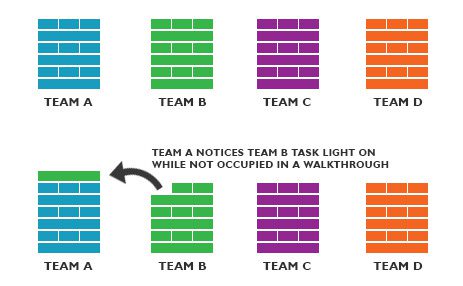Last month, members of the Weber Thompson Sustainabilteam (WTST) did a happy dance after presenting the results of their Occupant Engagement Pilot Project: An Experiment on Plug Load Energy Consumption at a WT all-office meeting. The two-week-long competitive occupant energy awareness game, Building Blocks, took place in May, 2016. During the game, fellow WT employees were broken up into four teams with the goal of catching and tagging co-worker’s unnecessary use of monitors, task lights and common area overhead lighting at our headquarters, The Terry Thomas building in South Lake Union. Scores were tallied using the fun element of building a wooden block tower using components from the popular game Jenga.

Teams during the occupant engagement exercise.
Each team made walkthrough observations during the game period to observe workstations, task lights and common area lights unnecessarily left on. The team with defaulting workstations lost blocks, which were added to the tower of the observing team. At the end of the game period, the team with the most blocks won. Thanks to this fun and competitive environment, individuals felt accountable for themselves and their team, resulting in conscious energy usage decisions with a (hopefully) lasting effect.
Later in the year, the data relevant to energy consumption was extracted, cleaned and restructured for analysis. It was separated in multiple ways for trend analysis for business and non-business hours, comparing sample employee (individual workstation) consumption to the total floor consumption and comparing individual employee profiles to each other.
How did energy consumption compare during Business Hours (8AM-8PM) and Non-Business Hours (8PM-8AM)? What equipment and behaviors make the biggest difference in office plug loads? What can we do to reduce our energy consumption through behavior alone? Explore the fascinating results in the full report and don’t forget to turn off the light when you are done.